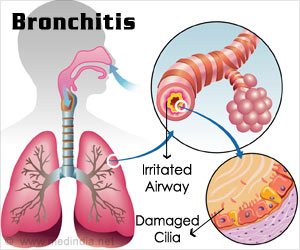- There is a rise in the use of electronic cigarettes, also known as vaping among teens
- Research highlights that smoking and vaping teens were 40.1 times more likely to use cannabis
- Teens who indulged in smoking and vaping are 36.53 times more likely to binge drink on 10 or more events
Nicotine Vaping and Co-occurring Substance Use Among Adolescents in the United States from 2017-2019
Go to source).
Is Vaping an Entry Point to Substance Abuse?
“While the overall health risks of vaping are lower than smoking, electronic cigarettes are still harmful to adolescents and warrant ongoing surveillance – especially as the long-term impacts remain unknown,” says lead author, Noah Kreski from the Columbia University Mailman School of Public Health. “Our results indicate that vaping is not an isolated behavior, but rather strongly tied to other substance use that can harm adolescents and make quitting nicotine more difficult. Recognizing the strong overlap between various forms of substance use, effective intervention efforts should work to simultaneously address vaping, drinking and cannabis use to encourage the health and well-being of young people.”The researchers used the National Institute on Drug Abuse's (NIDA) Monitoring the Future survey to track trends in the use of cigarettes, alcohol, cannabis, nicotine and cannabis vaping, and other substances among children in grades 8 (13-14 years old), 10 (15-16 years old), and 12 (17-18 years old).
How Vaping can Lead to Weed Usage
The researchers analyzed data from 51,872 teenagers who participated in the study between 2017 and 2019. They looked at the associations between past 30-day nicotine use (non, smoking-only, vaping-only, and any smoking and vaping) and past 30-day cannabis usage, making adjustments for demographic characteristics such as age, gender, race, parental education, and urbanity.Using nicotine and cannabis use (in any form, including vaping) as a criteria, they found that, compared to those who did not use nicotine at all, adolescents who smoked were 8.03 times more likely to use cannabis. Those who vaped were 20.31 times more likely to use cannabis. Teens who smoked and vaped were 40.1 times more likely to use cannabis.
The Link Between Nicotine and Binge Drinking
Even after adjusting for other factors, the researchers discovered a relationship between prior 30-day nicotine usage and two-week binge drinking. The extent of the link between smoking and vaping and binge drinking increased with higher levels of binge drinking. Adolescents who smoked and vaped, for example, were 5.6 times more likely to have binge drunk on one occasion than those who did not use nicotine at all. Teens were 21.60 times more likely than adults to binge drink three to five times. They were 36.53 times more likely to have binge drunk on ten or more occasions.“The links between vaping-only, or both smoking and vaping, and cannabis use and binge drinking outcomes in adolescents are particularly striking – especially at the highest levels of binge drinking. While the causal direction of these associations is unclear, the size of the effect is concerning given the harms these substances pose to adolescents,” adds Kreski, who is a Data Analyst at Columbia.
“Given the strong links between nicotine use and both cannabis use and binge drinking, there is a need for sustained interventions, advertising and promotion restrictions, and national public education efforts to reduce vaping in adolescents – efforts that acknowledge co-occurring substance use.”
The authors point out certain survey-related limitations of this study. These include the fact that the data was gathered from pupils throughout the school day, excluding those who were absent. Participants' self-reported nicotine vaping and smoking were similarly prone to measurement and recollection bias.
Reference:
- Nicotine Vaping and Co-occurring Substance Use Among Adolescents in the United States from 2017-2019 - (https://pubmed.ncbi.nlm.nih.gov/37198725/)
Source-Medindia













